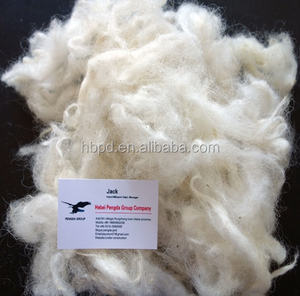What Is Cashmere and Why It’s Considered One of the Softest Fabrics in the World
What Is Cashmere and Why It’s Considered One of the Softest Fabrics in the World
Blog Article
Discover the Appeal of Cashmere an All-natural Fiber: Why It's a Must-Have in Your Wardrobe
The allure of cashmere, a deluxe all-natural fiber, transcends plain looks. Stemming from the Kashmir area, this light-weight yet durable product has actually woven its way right into high-end fashion as a result of its unique residential properties and functional appeal. From discussing its fascinating origin to recognizing its manufacturing care, process, and top quality, it deserves exploring why cashmere holds such an unique place on the planet of textiles. Discover the class and compound of this fiber as we start an expedition of its allure.

The Beginning and History of Cashmere: A Quick Summary
While lots of might see cashmere as a basic luxury, its background is soaked in abundant cultural custom. Stemming from the Kashmir region in India, cashmere wool has been produced for thousands of years. The fiber is acquired from the soft undercoat of cashmere goats, harvested during their molting period. As a valuable asset, it was traded along the Silk Roadway, ending up being very valued in Europe in the 18th century. The name 'cashmere' is an old English derivation of Kashmir. In spite of its international appeal, most of cashmere manufacturing still remains in Asia, specifically China and Mongolia. This historic trip highlights the cultural importance of cashmere, transforming it from a local specialty to a worldwide high-end.
Recognizing the Unique Features of Cashmere Fiber
Cashmere, renowned for its unique features, stands apart in the globe of textiles. This lavish fiber is incredibly soft, supplying a cozy and comfy feeling unlike any various other. It is considerably warmer than wool, making it a perfect option for winter months garments. Regardless of its heat, cashmere is remarkably lightweight and does not add unnecessary mass. This all-natural fiber is additionally known for its durability. While various other products may wear down in time, cashmere maintains its quality, ensuring resilient wear. Cashmere has a special aesthetic allure. Its gentle gloss and elegance make it a staple in high-end style. Understanding these residential properties clarifies why cashmere is not simply a high-end, however a rewarding investment for any type of wardrobe.

The Refine of Producing Cashmere: From Goat to Garment
To value the luxurious properties of cashmere completely, one need to understand its trip from the raw fiber to the completed item. The process starts with the cashmere goats, mostly discovered in Mongolia, China, and Iran. The soft undercoat of these goats, harvested during their natural molting season in spring, supplies the raw product. This fragile fiber is after that meticulously divided from the coarser outer hair in a labor-intensive process called dehairing. The pure cashmere is then dyed, spun into yarn, and finally weaved or woven into the coveted garments. Each action is meticulously carried out to protect cashmere's noteworthy warmth, soft qualities, and toughness. This elaborate procedure causes the creation of an absolutely luxurious material.

Decoding the High Quality and Rate: Why Is Cashmere so Expensive?
The high cost of cashmere garments frequently leaves customers wondering regarding its reason. The expenditure stems mostly from the difficult manufacturing process. is cashmere a natural fiber. Cashmere originates from the great undercoat of the cashmere goat, with each goat producing a plain 150 grams each year. The labor-intensive procedure of brushing and gathering the rare fiber substantially drives up the expense. The processing of raw cashmere needs both time and expertise, with the fibers needing to be thoroughly sorted, cleaned, and spun. The shortage of pure cashmere, combined with its remarkable soft qualities, heat, and longevity, validates its luxury status and high price. These aspects combined make cashmere a pricy yet extremely popular commodity on the planet of style.
Cashmere in vogue: The Flexibility and Classic Appeal
In spite of its high price, the ageless charm and adaptability of cashmere have actually solidified its location in the realm of style. The fiber's distinct structure, defined by its softness and warmth, has actually become synonymous with deluxe and convenience. Its adaptability prolongs past seasonal patterns, making it a wardrobe crucial in numerous types, from stylish sweaters to posh headscarfs. The versatile nature of cashmere permits its assimilation into both casual and official clothing, indicating its wide appeal. Furthermore, the material's withstanding popularity throughout the years testifies to its ageless appeal. As trends come and go, cashmere continues to be a continuous, its allure undiminished, remaining to shape the fashion and motivate sector's landscape.
Taking Care Of Your Cashmere: Maintenance and Conservation Tips
Guaranteeing the long life of cashmere garments calls for particular treatment and interest. Routine cleaning with a cashmere comb can avoid pilling. With these upkeep and conservation suggestions, one can ensure their cashmere stays sturdy and luxuriously soft.
Verdict
Cashmere, with its unequaled gentleness and warmth, gives both luxury and sturdiness. Discover the appeal of cashmere and raise your cashmere style collection.

Report this page